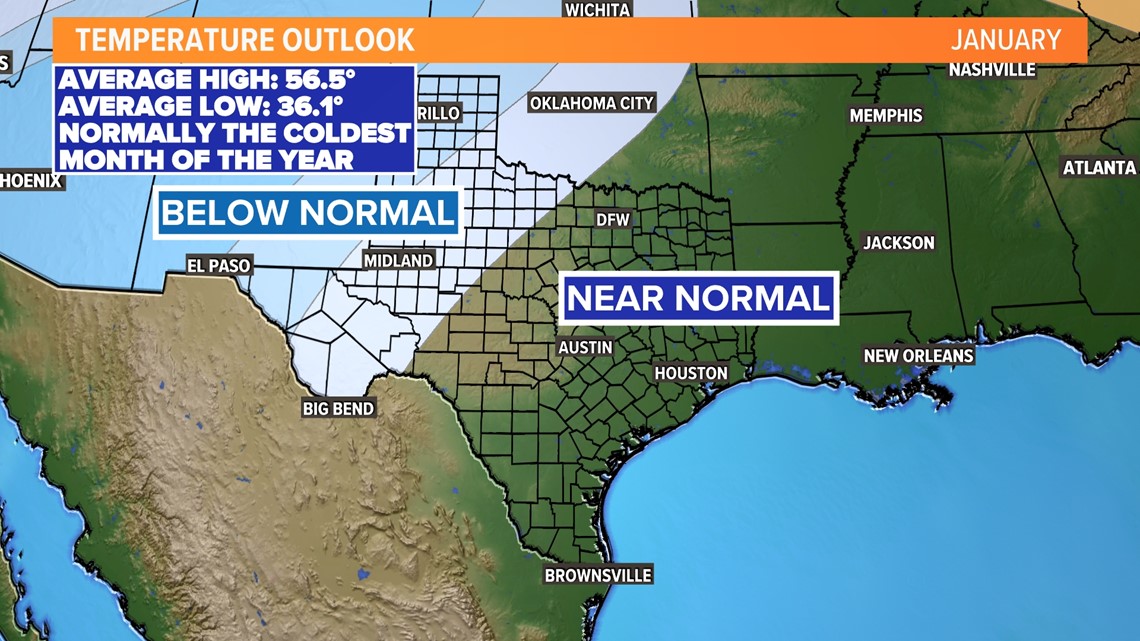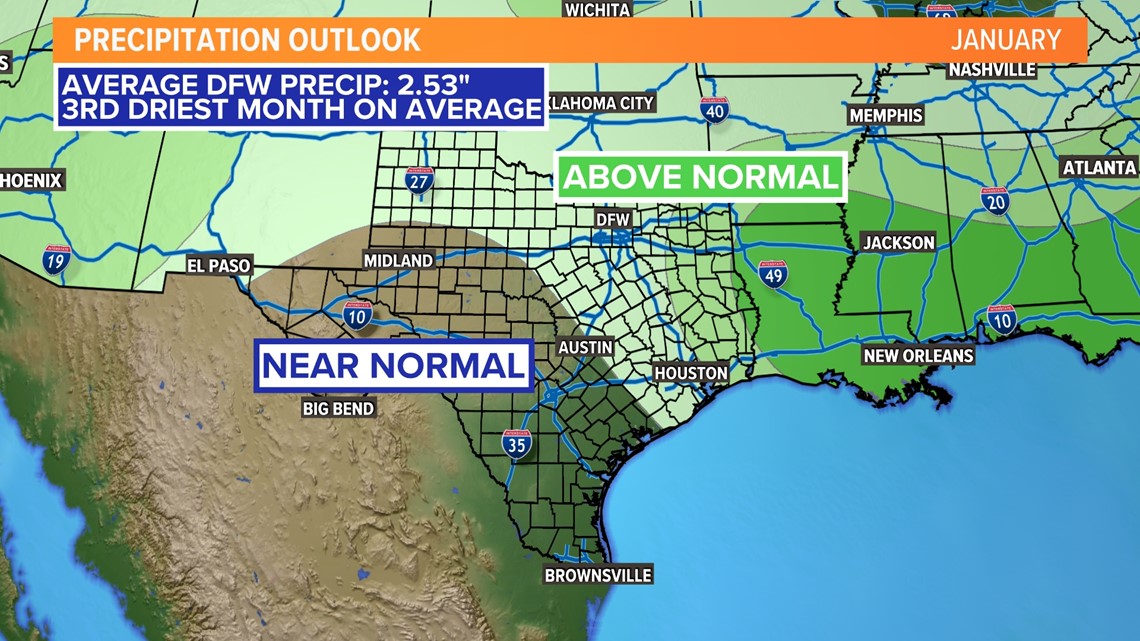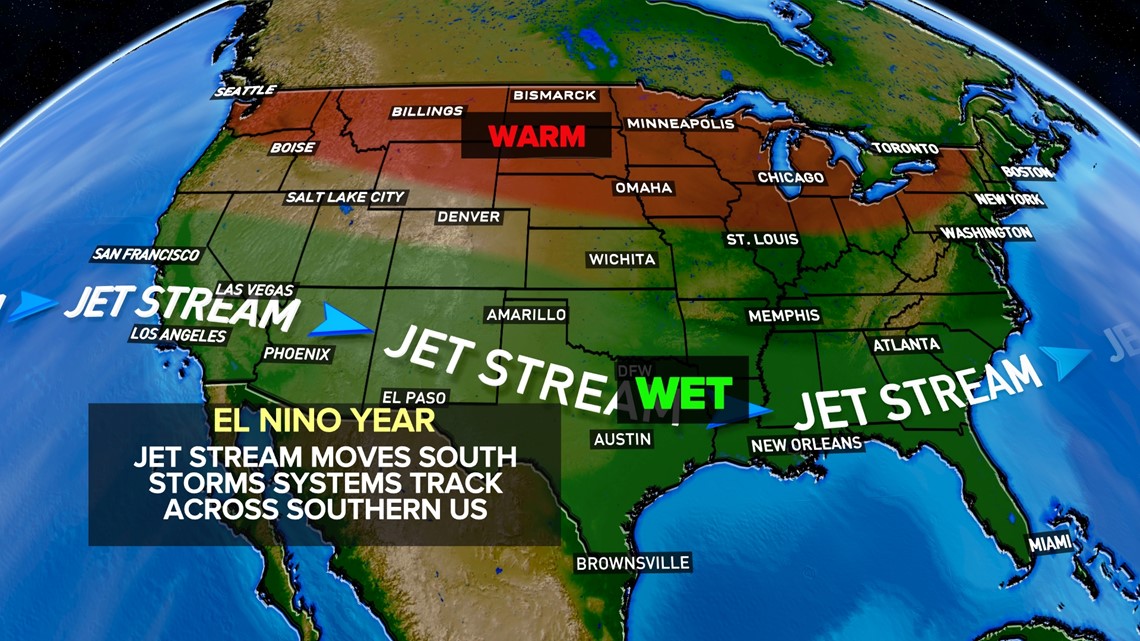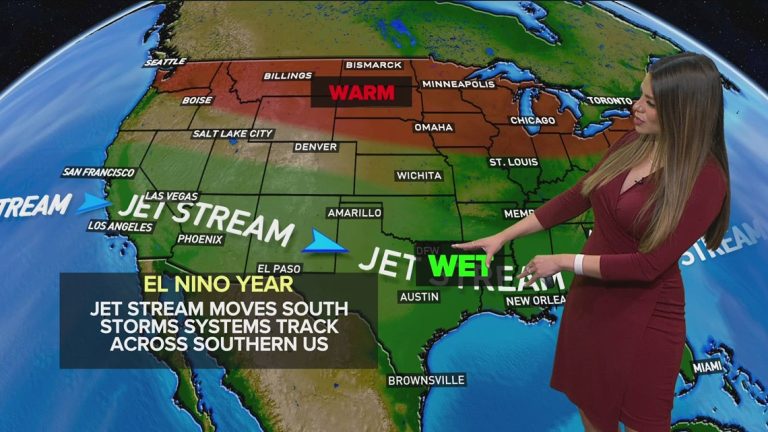There are two chances of rain this week. Will this trend continue for the rest of the month?
DALLAS – January has arrived! This is the coldest month of the year for DFW, but the third driest on average. This is also the time of year when North Texans think about potential winter weather dangers.
Here's what the January forecast looks like so far.
The overall pattern indicates that North Texas will likely see a wetter than normal January with temperatures near normal. The average maximum temperature for this month is 56.5 degrees and the minimum is 36.1 degrees. Average rainfall is just over two and a half inches.




This doesn't mean we can completely rule out this month's winter weather. It just means it doesn't look cold enough for widespread and impactful winter weather in North Texas yet.
Our winter weather forecast is based on the waters along the equator in the Pacific Ocean. This affects how the jet stream (a fast, narrow stream of air flowing from west to east that drives the weather) operates during the winter months.
The temperature along the equatorial Pacific Ocean gives us a glimpse into how strong or weak certain air currents are. Temperature tells us whether we are in an El Niño phase (warming of waters along the equatorial Pacific), La Niña (cooling of waters along the equatorial Pacific), or a neutral phase. The last three winters have been affected by La Niña, but a shift has been detected in 2023.
This year, the El Niño phenomenon is occurring as we approach the winter months for the first time in four years. Overall, this pattern changes our jet stream making winter more active. A more active pattern means a wetter than normal and colder than normal winter in the South.


We not only look at patterns based on El Niño, La Niña or neutral conditions, but we also look at the strength of each to help determine the forecast for winter.
The 5 snowiest winters occurred during weak to moderate El Niño phases. However, the winters with “average” snowfall all occurred during (all phases) weak El Niño phases, strong El Niño phases, neutral phases, strong La Niña phases, and weak La Niña phases.
The last time we saw an El Niño phenomenon of this strength was during the winter of 1997-1998. This winter ended up being the third wettest on record with 15.22 inches of precipitation. No ice was reported with only a trace of snow indicating that temperatures were no colder than normal. That doesn't mean that will be the case this time, but looking at the patterns helps give an idea of what we have in store this winter.
As always, the weather evolves and each week can look different.
Be sure to stick with the WFAA Weather Team. We can get through another winter together!

